South Carolina Colony
|
|
This Site:
|
South Carolina Colony Map from 1775
Indian DepredationsBefore the settlement of Georgia was begun, below the Savannah River, the South Carolinians were often annoyed by Indian depredations incited by the Spaniards in Florida. In 1703 the Apalachian Indians, in league with the Spaniards, were attacked by Governor Moore and a body of white men and Indians. Their chief village was desolated; nearly 800 of the Apalachians were made prisoners, and their whole territory was made tributary to the white people. A few years later a secret general Indian confederacy was formed to exterminate the white people by a single blow. Within forty days, in the spring of 1715, the Indian tribes from the Cape Fear to the St. Mary and back to the mountains had coalesced in the conspiracy, and before the people of Charleston had any intimation of danger, 100 white victims had been slain in the remote settlements. The Creeks, Yamasees, and Apalachians in the South had confederated with the Cherokees, Catawbas, and Congarees in the West, in all about 6,000 strong, while more than 1,000 warriors issued from the Neuse region to avenge their misfortunes in the war of 1712-13. The people were filled with terror. Governor Craven acted with the utmost wisdom and energy. He declared the province to be under martial law, and at the head of 1,200 men, black and white, he marched to meet the foe. The Indians were at first victorious, but after several bloody encounters the Southern warriors were driven across the Savannah River (May, 1715) , and halted not until they found refuge under the Spanish guns at St. Augustine. The Cherokees and their northern neighbors had not yet engaged in the war, and they wearily returned to their hunting-grounds, deeply impressed with a sense of the greatness and strength of the white people. Anglican Church Becomes Official Church of South CarolinaThe first part of this excitement had just passed by, when the proprietors attempted to establish the Anglican Church ritual as the state method of worship in South Carolina. In 1704 the Provincial Assembly of South Carolina passed an act for the establishment of the Church of England as the legal Church of the colony, and requiring all public officers to conform to its doctrine and ritual. The province was divided into ten parishes, lands were granted for glebes and church-yards, and salaries, payable from the provincial treasury, were fixed and appointed for the rectors. The regulation included the French settlements on the Santee and the Dutch settlement on the Ashley. Several churches were soon afterwards built. A commission was appointed for the displacing of rectors and ministers of the churches. A portion of the acts establishing the Anglican Church in South Carolina were disapproved by some of the proprietors as well as by the people. These acts were referred to the lords of trade and plantations, and were declared void by the Queen in 1705, but the Church party remained dominant. England Acquires the CarolinasFrench and Spanish war-vessels entered Charleston Harbor with troops, to capture the province and annex it to the Spanish domain of Florida; but they were repulsed with great loss. The proprietors appearing indifferent to the sufferings of the colonists, the people arose in their might in 1719, deposed the proprietary governor, and appointed Colonel Moore governor of the colony. This course was sustained by the crown, and in 1729 the King of England bought the two Carolinas for $80,000, and they became separate royal provinces. From that time until the French and Indian War the general history of the Carolinas presented nothing very remarkable, excepting their brave efforts for defending the colonies against the Indians and Spaniards. The South Carolinians warmly sympathized with the patriotic movements in the North preceding the Revolutionary War. The royal governor (Lord Campbell) abdicated the government, and took refuge on board a British war-vessel, in September, 1775, when the government was administered by a provincial council. South Carolina Adopts a ConstitutionA State constitution was first adopted March 26, 1776, and the national Constitution was ratified May 23, 1788. Great political agitation existed in the State from 1828 to 1833, there being strong opposition to the high tariff upon importations imposed by the national government. Immediately after the Presidential election in 1832, a State convention met (November) , and adopted unanimously a " nullification ordinance " (see JACKSON, ANDREW; NULLIFICATION), which pronounced the tariff " null, void, and no law, nor binding on this State, its officers and citizens," and prohibited the payment of duties on imports imposed by that law within the State after February 1, 1833. It was declared that no appeal in the matter should be made to the Supreme Court of the United States against the validity of an act of the legislature to that effect, and that, should the national government attempt to enforce the law thus nullified, or interfere with the foreign commerce of the State, the people of South Carolina would " hold themselves absolved from all further obligations to maintain or preserve their political connection with the people of the other States." South Carolina Supports State's RightsThis was an assertion of the doctrine of State supremacy pure and simple. It was approved by the governor, ROBERT Y. HAYNE in his message to the legislature, and that body took measures to give practical effect to the ordinance. President Jackson met the vital issue boldly and promptly, in a proclamation which made the nullifiers pause; and, during the ensuing session of Congress, a compromise tariff was passed, which allayed feeling and postponed civil war. Secession of South CarolinaA more fatal political excitement began in South Carolina in 1860, when Abraham Lincolnn was elected President. On the day of his election the legislature assembled at Columbia, when joint resolutions of both Houses providing for a State convention to consider the withdrawal of the State from the Union were offered. Some of the more cautious members counselled delay, and to wait for the cooperation of other States, but this advice was condemned by more zealous members. " If we wait for co-operation," said one of them, " slavery and State rights will be abandoned ; State sovereignty and the cause of the South lost forever." James Chestnut, then a member of the United States Senate, recommended immediate secession; and W. W. Boyce, a member of the national House of Representatives, said, "I think the only policy for us is to arm as soon as we receive authentic intelligence of the election of Lincoln. It is for South Carolina, in the quickest manner and by the most direct means, to withdraw from the Union." In the course of the debate the fact came out that emissaries had already been sent from the Southern States to Europe to prepare the way for aid and recognition of the contemplated Southern Confederacy by foreign governments; and that France had made propositions for the arrangement of such relations between that country and the government about to be established in South Carolina as would insure to the former such a supply of cotton for the future as its increasing demand for that article would require. On November 12 the legislature passed an act authorizing a State convention. That legislature also declared that a "sovereign State of the Union had a right to secede from it; that the States of the Union are not subordinate to the national government, were not created by it, and do not belong to it; that they created the national government; that from them it derives its powers ; that to them it is responsible; and that when it abuses the trust reposed in it they, as equal sovereigns, have a right to resume the powers respectively delegated to it by them." As soon as the legislature had authorized the convention, orators of every grade went out to harangue the people in all parts of the State. Every speech was burdened with complaints of "wrongs suffered by South Carolina in the Union." The organ of the Confederates in Charleston called upon all natives of South Carolina in the army and navy to resign their commissions and join in the movement. " The mother looks to her sons to protect her from outrage," said this fiery newspaper (the Charleston Mercury) ; " she is sick of the Union - disgusted with it upon any terms within the range of the widest possibility." This was responded to by the resignation of many South Carolinians; and the leaders in the movement declared that " not a son of that State would prove loyal to the old flag." They commended the course of Lieut. J. R. Hamilton, a South Carolinian and member of the United States navy, who issued a circular letter to his " fellow-Southerners " in the marine service, expatiating much upon honor, and saying, "What the South asks of you now is to bring with you every ship and man you can, that we may use them against the oppressors of our liberties and the enemies of our aggravated but united people." Vigilance committees were organized to discover and suppress every opposition sentiment and movement in South Carolina. These committees, clothed with power, were called " guardians of Southern rights." Their officers possessed full authority to decide all questions brought before them, and their decision was final and conclusive." Their patrols were authorized to arrest and bring before the committees all suspected white men, and to suppress all gatherings of negroes. It was under such circumstances that the election of members of the convention was held, and the Charleston Mercury was enabled to say to the officers of the army and navy natives of that State it was calling home, " You need have no more doubt of South Carolina's going out of the Union than of the world's turning round. Every man that goes to the convention will be a pledged man-pledged for immediate separate State secession in any event whatever." This promise was uttered before the members of the convention had been chosen. They were chosen December 3, 1860.
BANNER OF THE SOUTH CAROLINA SECESSION CONVENTION.
On each side of the platform on which the president sat was a real palmetto-tree. After the signature of every member of the convention was affixed to the ordinance the venerable Rev. Dr. Bachman advanced to the front of the platform and uttered a petition to Almighty God for his blessing and favor on the act. Then the president stepped forward, read and exhibited the instrument to the people, and said, " The ordinance of secession has been signed, and I proclaim the State of South Carolina an independent common-wealth ". As soon as the proclamation was made the civil officers resigned their places under the government of the United States. Judge McGrath, of the United States district court at Charleston, said to the grand-jurors in his court, " For the last time, I have, as a judge of the United States, administered the laws of the United States within the limits of South Carolina. So far as I am concerned, the temple of justice raised under the Constitution of the United States is now closed." Then, with solemn gravity, he laid aside his gown and retired. At the same time the United States district attorney, the collector of the port of Charleston, and the national sub-treasurer resigned, and were followed by all the civil officers of the State.
On Dec. 21, 1860, the South Carolina convention appointed Robert W. Barnwell, James H. Adams, and James L. Orr commissioners to proceed to Washington to treat for the possession of the public property within the limits of their State. They arrived in Washington Dec. 26, and the day after their arrival they heard of the movement of MAJOR ROBERT ANDERSON. On the 28th they addressed a formal diplomatic letter to the President, drawn up by Mr. Orr, informing him of their official authority to treat for the delivery, by the United States, of all forts and other public property in South Carolina to the authorities of that "sovereign State." They also furnished him with a copy of the ordinance of secession. They urged the President to immediately withdraw all the National troops from Charleston Harbor, because they were a "standing menace." The President was highly offended by the arrogance of the commissioners, acting under the peculiar circumstances of the case, and the best friends of the country urged him to arrest them; but, soothed by his fears, he replied to them courteously (December 30), and expressed a willingness to lay before Congress any proposition they might make. To recognize their State as a foreign power would be usurpation on his part, and he should refer the whole matter to Congress. He denied ever having made any agreement with members of Congress from South Carolina to withhold reinforcements from the forts at Charleston, or any pledge to do so, which William Porcher Miles asserted had been done. He alluded to the seizure of the arsenal at Charleston, and gave them to understand that he should defend Fort Sumter. Two days later the commissioners replied to this, in a long and extremely insulting letter, in which they charged the President with perfidy, and taunted him with dereliction of duty. The President made no reply, but returned the letter to the commissioners endorsed - " This paper, just presented to the President, is of such a character that he declines to receive it." South Carolina Attacks Fort Sumter . . . The War Begins
|
|
|
||
|
|
Site Copyright 2003-2018 Son of the South. For Questions or comments about this collection, contact: paul@sonofthesouth.net |
|
|
Are you Scared and Confused? Read My Snake Story, a story of hope and encouragement, to help you face your fears. |
||
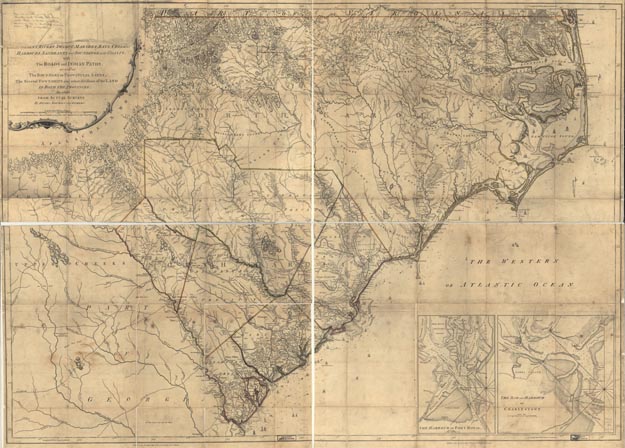
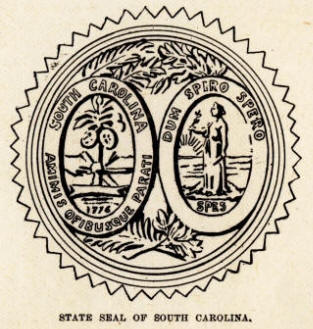 South
Carolina, Colony OF, became one of the original thirteen
States of the Union. It is supposed by some that
South
Carolina, Colony OF, became one of the original thirteen
States of the Union. It is supposed by some that
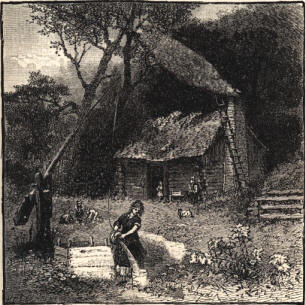 They
were subdued in 1680. In 1690 a large number of
They
were subdued in 1680. In 1690 a large number of
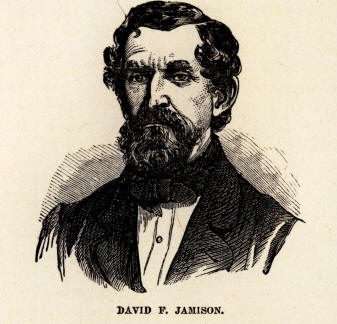 They met at Columbia on the 17th, and chose David
F. Jamison president. The great prevalence of small-pox there caused
the delegates to adjourn to Charleston, where they proceeded at once
to business. They chose several committees, one of which was to
draft an ordinance of secession. J. A. Inglis was chairman of that
committee, and on December 20 reported the following ordinance: " We,
the people of the State of South Carolina, in convention assembled,
do declare and ordain, and it is hereby declared and ordained, that
the ordinance adopted by us in convention on the 23d day of May, in
the year of our Lord one thousand seven hundred and eighty-eight,
whereby the Constitution of the United States was ratified, and also
all acts and parts of acts of the General Assembly of the State
ratifying amendments of the said Constitution, are hereby repealed,
and the union now subsisting between South Carolina and other States
under the name of the United States of America is hereby dissolved."
This ordinance had been framed by Robert B. Rhett some time before,
and the committee to report it had been selected with Mr. Inglis at
its head. The ordinance, reported at noon, December 20, 1860, was
adopted just forty-five minutes after it was submitted to the
convention. There was no debate, for every delegate was pledged to
vote for it.
They met at Columbia on the 17th, and chose David
F. Jamison president. The great prevalence of small-pox there caused
the delegates to adjourn to Charleston, where they proceeded at once
to business. They chose several committees, one of which was to
draft an ordinance of secession. J. A. Inglis was chairman of that
committee, and on December 20 reported the following ordinance: " We,
the people of the State of South Carolina, in convention assembled,
do declare and ordain, and it is hereby declared and ordained, that
the ordinance adopted by us in convention on the 23d day of May, in
the year of our Lord one thousand seven hundred and eighty-eight,
whereby the Constitution of the United States was ratified, and also
all acts and parts of acts of the General Assembly of the State
ratifying amendments of the said Constitution, are hereby repealed,
and the union now subsisting between South Carolina and other States
under the name of the United States of America is hereby dissolved."
This ordinance had been framed by Robert B. Rhett some time before,
and the committee to report it had been selected with Mr. Inglis at
its head. The ordinance, reported at noon, December 20, 1860, was
adopted just forty-five minutes after it was submitted to the
convention. There was no debate, for every delegate was pledged to
vote for it.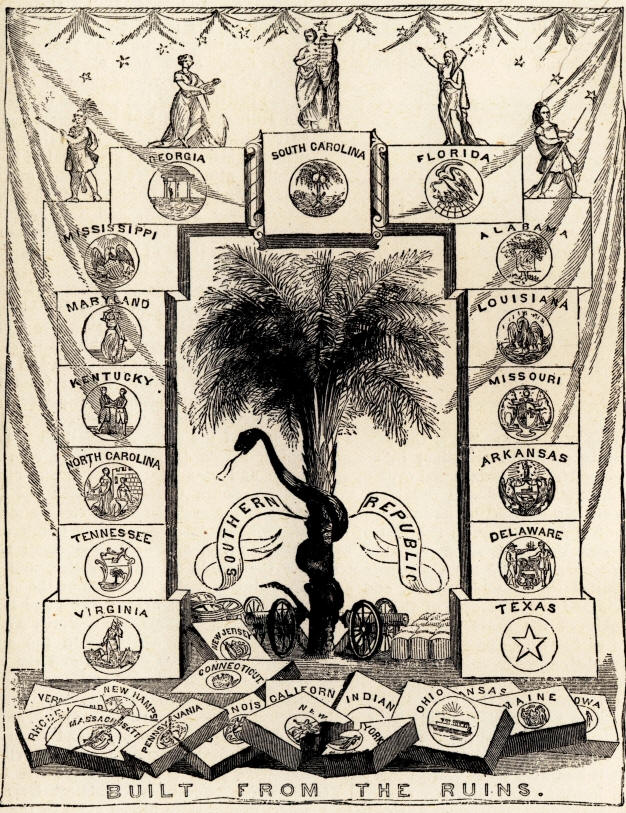
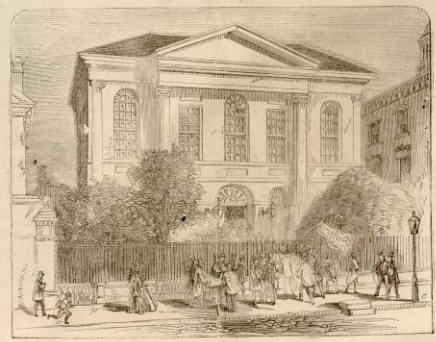 The 169 members of the convention were then
assembled in St. Andrew's Hall, and it was agreed that at seven
o'clock in the evening they should go in procession to Institute
Hall and sign " the great act of deliverance and liberty." When the
convention adjourned for dinner at 4 P.M. and went in regular
procession from St. Andrew's Hall, they were cheered by the
populace, and the chimes of St. Michael's Church pealed forth Auld
Lang Sync and other airs. At seven o'clock they reassembled in the
hall of the institute for the purpose of signing the ordinance. It
had been engrossed on parchment, twenty-five by thirty-three inches
in size, with the great seal of South Carolina attached. The
governor and his council and both branches of the legislature were
present, and the hall was densely crowded with men and women of
Charleston. Back of the president's chair was suspended a banner,
composed of cotton cloth, with devices painted in water colors by a
Charleston artist named Alexander. The base of the design was a mass
of broken and disordered blocks of stone, on each of which were the
name and arms of a free-labor State. Rising from this mass were two
columns of perfect and symmetrical blocks of stone, connected by an
arch of the same material, on each of which, fifteen in number, were
seen the name and coat of arms of a slave-labor State. South
Carolina formed the key-stone of the arch, on which stood a statue
of Calhoun leaning upon a trunk of a palmetto-tree, and holding a
scroll bearing the words " Truth, Justice, and the Constitution." On
each side of the statue were allegorical figures of Faith and Hope.
Beyond each of these was a North American Indian with a rifle. In
the space formed by the two columns and the arch was the device of
the seal and flag of South Carolina - a palmetto-tree, with a
rattlesnake coiled around its trunk, and at its base a park of
cannon and some emblems of State commerce. On a ribbon fluttering
from the body of the tree were the words " Southern Republic." Over
the whole design were fifteen stars in the segment of a circle.
Underneath all, in large letters, were the words " Built from the
Ruins."
The 169 members of the convention were then
assembled in St. Andrew's Hall, and it was agreed that at seven
o'clock in the evening they should go in procession to Institute
Hall and sign " the great act of deliverance and liberty." When the
convention adjourned for dinner at 4 P.M. and went in regular
procession from St. Andrew's Hall, they were cheered by the
populace, and the chimes of St. Michael's Church pealed forth Auld
Lang Sync and other airs. At seven o'clock they reassembled in the
hall of the institute for the purpose of signing the ordinance. It
had been engrossed on parchment, twenty-five by thirty-three inches
in size, with the great seal of South Carolina attached. The
governor and his council and both branches of the legislature were
present, and the hall was densely crowded with men and women of
Charleston. Back of the president's chair was suspended a banner,
composed of cotton cloth, with devices painted in water colors by a
Charleston artist named Alexander. The base of the design was a mass
of broken and disordered blocks of stone, on each of which were the
name and arms of a free-labor State. Rising from this mass were two
columns of perfect and symmetrical blocks of stone, connected by an
arch of the same material, on each of which, fifteen in number, were
seen the name and coat of arms of a slave-labor State. South
Carolina formed the key-stone of the arch, on which stood a statue
of Calhoun leaning upon a trunk of a palmetto-tree, and holding a
scroll bearing the words " Truth, Justice, and the Constitution." On
each side of the statue were allegorical figures of Faith and Hope.
Beyond each of these was a North American Indian with a rifle. In
the space formed by the two columns and the arch was the device of
the seal and flag of South Carolina - a palmetto-tree, with a
rattlesnake coiled around its trunk, and at its base a park of
cannon and some emblems of State commerce. On a ribbon fluttering
from the body of the tree were the words " Southern Republic." Over
the whole design were fifteen stars in the segment of a circle.
Underneath all, in large letters, were the words " Built from the
Ruins."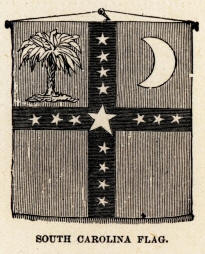 On the day when the ordinance of secession was
passed, the convention adopted a new banner for the " independent
commonwealth." It was composed of red and blue silk, the former
being the ground of the standard, and the latter, in the form of a
cross, bearing fifteen stars. The larger star was for South
Carolina. In one upper corner was a white crescent moon, and in the
other a palmetto-tree. A small medal was also struck to commemorate
the event.
On the day when the ordinance of secession was
passed, the convention adopted a new banner for the " independent
commonwealth." It was composed of red and blue silk, the former
being the ground of the standard, and the latter, in the form of a
cross, bearing fifteen stars. The larger star was for South
Carolina. In one upper corner was a white crescent moon, and in the
other a palmetto-tree. A small medal was also struck to commemorate
the event.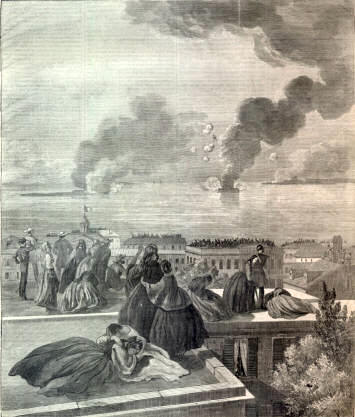 In April, 1861, citizens of South Carolina
attacked Fort Sumter, and compelled its evacuation by National
troops, and for about four years afterwards kept up a warfare upon
the life of the republic. At the close of the war a provisional
govern-or was appointed (June 30, 1865) by the President, and in
September a State convention, at Columbia, repealed the ordinance of
secession, and declared slavery abolished. In October James L. Orr
was chosen governor, with other State officers, and the government
passed into their hands Dec. 25, 1865. This government continued
until superseded (March, 1867) by military government, South and
North Carolina being included in one military district. On January 14,
1868, at a convention composed of thirty-four white people and
sixty-three colored, a constitution was adopted, which was ratified
at an election in April, 1869, by a large majority. Members of the
legislature (72 white and 85 colored) and representatives in
Congress were chosen. Reorganization was practically completed on
the ratification of the Fourteenth Amendment, by the withdrawal of
the military authorities on July 13, 1868. The legislature ratified
the Fifteenth Amendment of the national Constitution March 11, 1869.
Population in 1890, 1,151,149; in 1900, 1,340,316.
In April, 1861, citizens of South Carolina
attacked Fort Sumter, and compelled its evacuation by National
troops, and for about four years afterwards kept up a warfare upon
the life of the republic. At the close of the war a provisional
govern-or was appointed (June 30, 1865) by the President, and in
September a State convention, at Columbia, repealed the ordinance of
secession, and declared slavery abolished. In October James L. Orr
was chosen governor, with other State officers, and the government
passed into their hands Dec. 25, 1865. This government continued
until superseded (March, 1867) by military government, South and
North Carolina being included in one military district. On January 14,
1868, at a convention composed of thirty-four white people and
sixty-three colored, a constitution was adopted, which was ratified
at an election in April, 1869, by a large majority. Members of the
legislature (72 white and 85 colored) and representatives in
Congress were chosen. Reorganization was practically completed on
the ratification of the Fourteenth Amendment, by the withdrawal of
the military authorities on July 13, 1868. The legislature ratified
the Fifteenth Amendment of the national Constitution March 11, 1869.
Population in 1890, 1,151,149; in 1900, 1,340,316.